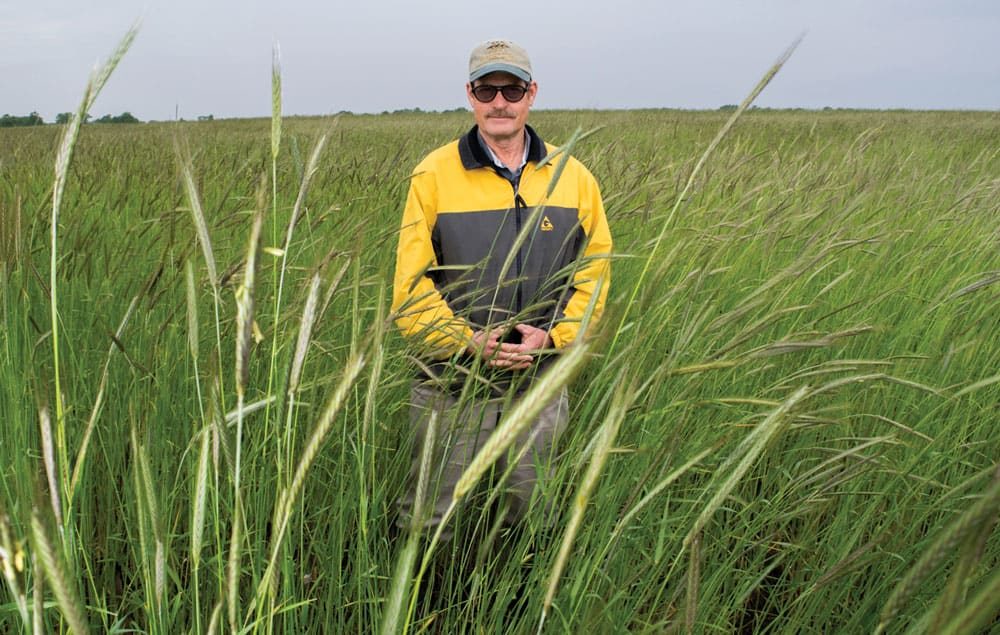No-Till Farmer
Get full access NOW to the most comprehensive, powerful and easy-to-use online resource for no-tillage practices. Just one good idea will pay for your subscription hundreds of times over.

STOPPING EROSION. Hallsville, Mo., Frank Martin says halting soil loss on his 800-acre farm has been a top priority since he turned to no-till practices and started seeding cereal rye as a cover crop in 2001. He no-tills both corn and soybeans into rye, rolling it down ahead of planting to create a mulch that preserves soil moisture and discourages weed-seed germination.
Frank Martin likes to keep things simple. He uses older combines with no yield monitors and he isn’t into using a lot of precision mapping on his 800-acre farm. But Martin doesn’t need technology to understand how important his soils are to a profitable no-till operation because he’s seen too much soil washing away in his area.
In early May this year, after a winter full of rainstorms and snow, he stepped into a long-time no-tilled field and his boot heel sunk 2 inches into the ground. Planting was still delayed but his fields were in better shape than most of his neighbors’ and allowed him to plant most of his crops. It’s a scenario Martin has become familiar with.
“It pains me to go down the road and see all the fields tilled up, then you see severe erosion. What are these people thinking?” says the Hallsville, Mo., grower. “I just don’t like to see any soil wash away. When it’s gone it’s hard to replace.”
Martin deals mostly with shallow, claypan soils that are only 6-12 inches deep. He got serious about no-tilling and seeding cover crops around 2001. “I’ve kind of learned along the way and made mistakes. But I’m more committed than ever to trying to keep my soil loss to as close to zero as I can,” he says.

When poor weather creates tough conditions in his fields, Hallsville, Mo., no-tiller Frank Martin uses a Trek electrical assist, full-suspension mountain…